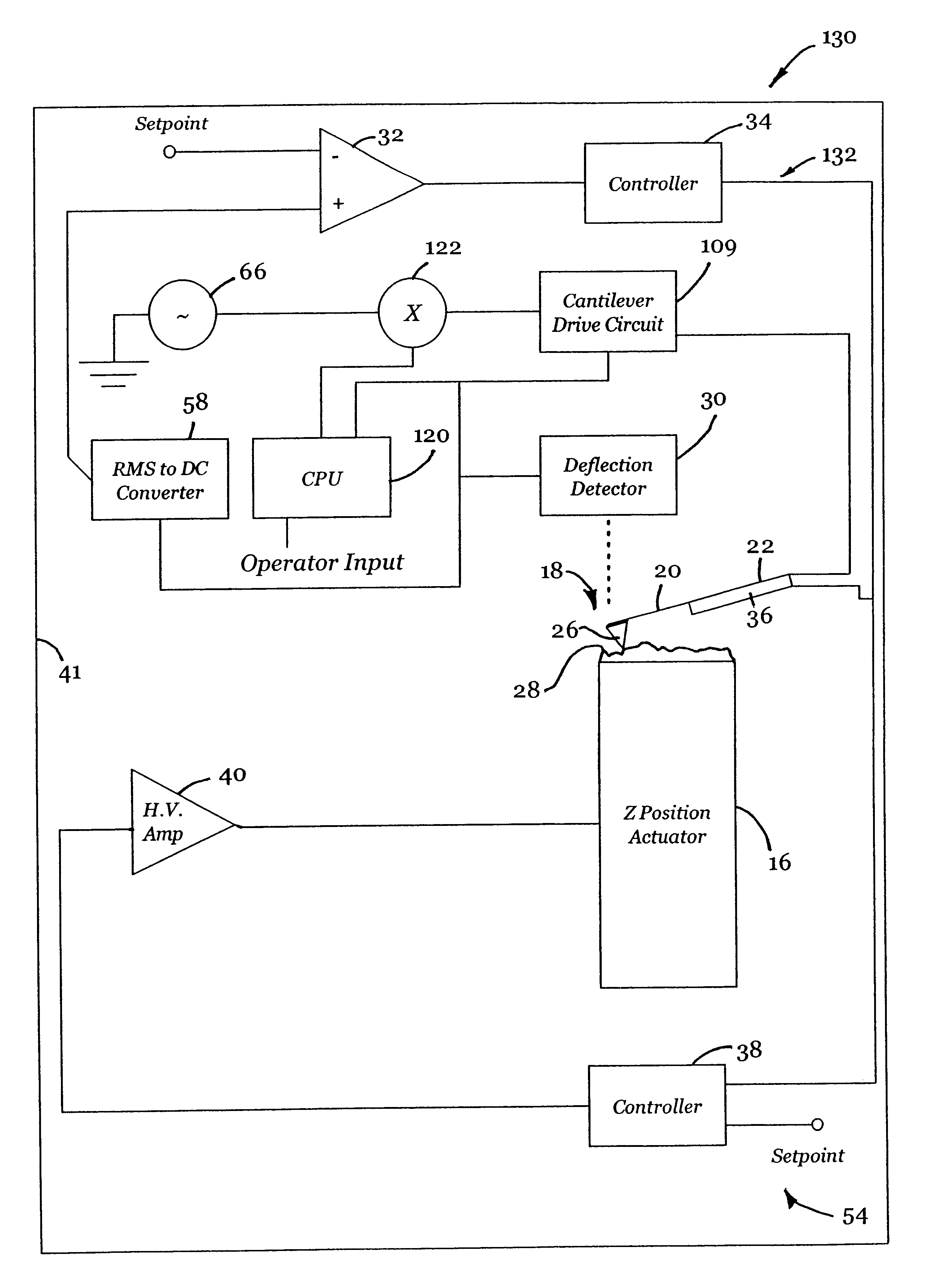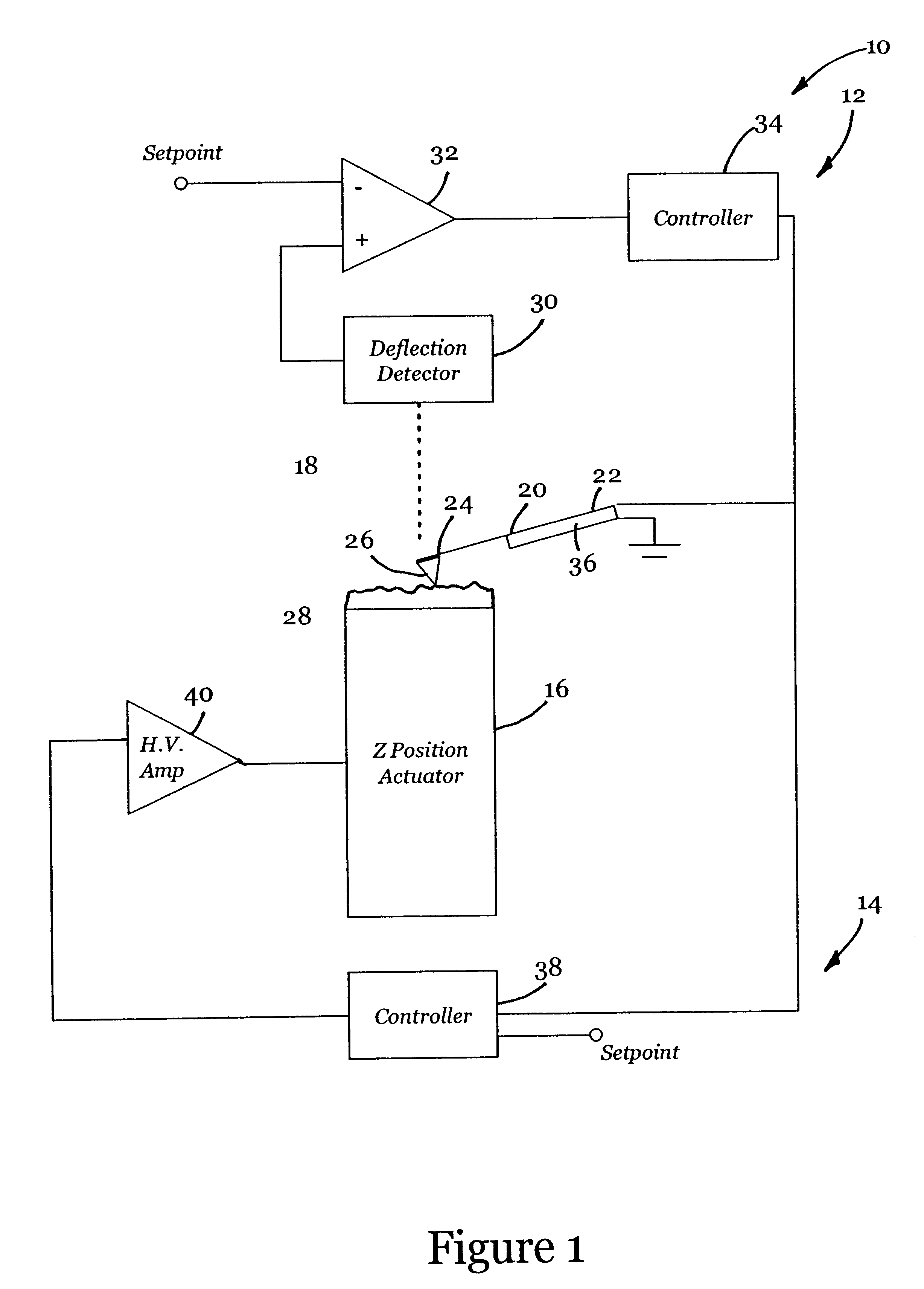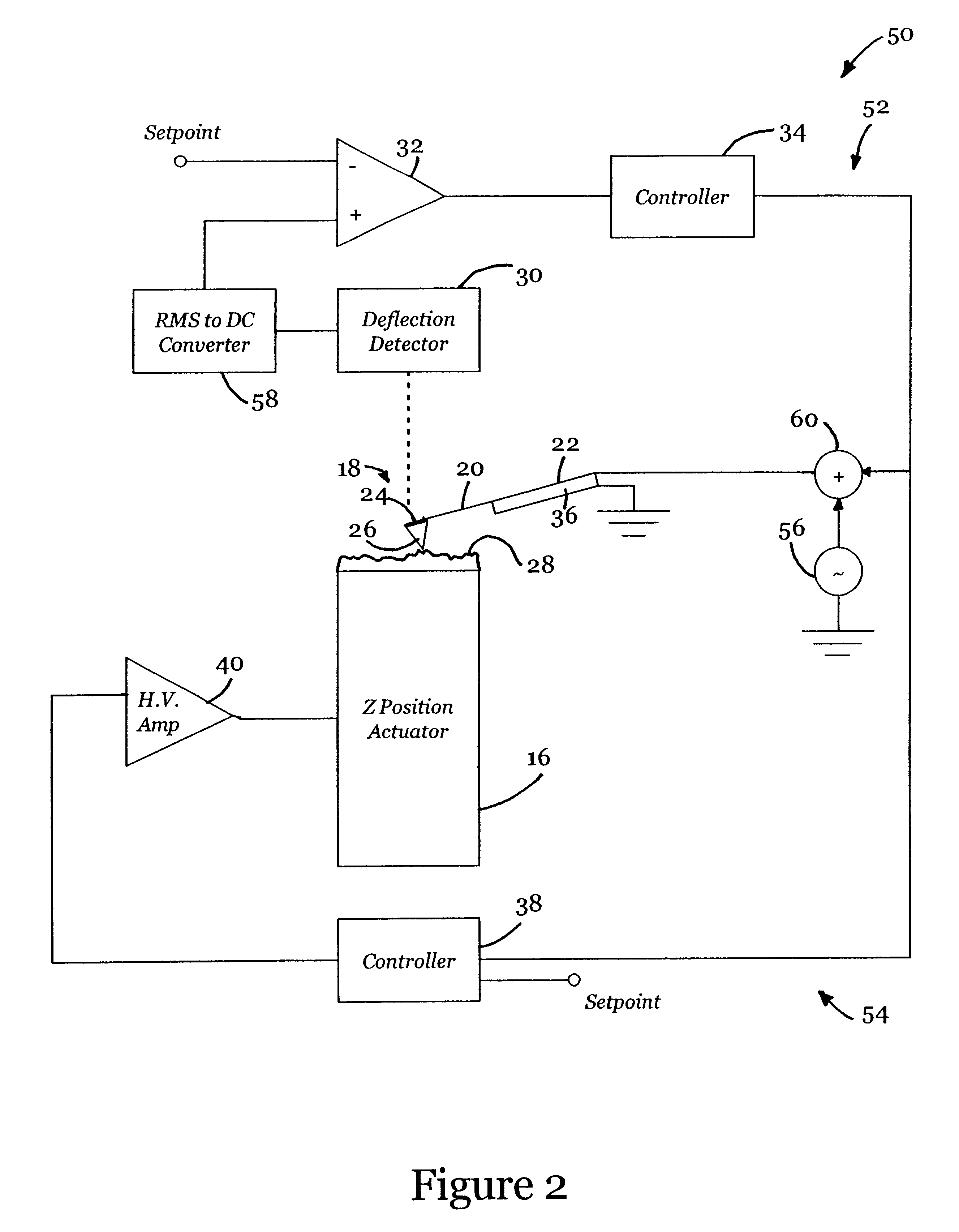The present invention combines an AFM Z position actuator and a self-actuated Z position cantilever (both operable in cyclical mode and contact mode), with appropriately nested
feedback control circuitry to achieve high-speed imaging and accurate Z position measurements. Most generally, the feedback signals applied to each of the actuators can be independently monitored to indicate the
topography of the sample surface, depending upon the scan rate and sample
topography.
In one embodiment of the present invention, the lower frequency topography features of a sample, including the slope of the sample surface, are followed by a standard Z actuator while the
high frequency components of the surface topography are followed by the self-actuated cantilever. Preferably, two feedback loops are employed. The first
feedback loop controls the self-actuated cantilever to maintain a relatively
constant force between the tip of the cantilever and the sample surface. The second
feedback loop controls the standard Z actuator, at a lower speed than the first
feedback loop and serves either (1) to keep the self-actuated cantilever within its operating Z range or (2) to maintain the
linearity of the positioning sensitivity of the cantilever when following
low frequency topography. This embodiment also allows for the standard Z actuator to be exclusively used for accurate height measurements when the scan rate is sufficiently lowered, typically less than 500 .mu.m / sec.
According to a preferred embodiment of the present invention, an AFM which operates in cyclical mode (i.e., TappingMode.TM.) combines both the AFM Z actuator and the self-actuated cantilever with appropriate
feedback control in a
system that oscillates the self-actuated actuator without introducing mechanical resonances other than that of the cantilever. Most notably, the self-actuated cantilever is not oscillated by vibrating a piezo-
crystal mechanically coupled to the cantilever, but rather is oscillated at its
resonance by directly exciting the piezoelectric material disposed thereon. This eliminates mechanical resonances in the
coupling path which would otherwise be present.
As suggested above, the speed of a standard AFM in cyclical mode is generally limited by the
loop bandwidth of the force detection circuitry and the Z positioning apparatus. A further
limiting factor associated with standard AFMs pertains to phase shift contributions from the various components of the loop that accumulate to limit the
gain of an otherwise stable
operating system. Importantly, however, the self-actuated cantilever of the present invention does not have significant phase shift contributions at standard operating frequencies, even though the detection bandwidth of the AFM in cyclical mode is still limited by the width of the
resonance peak of the cantilever. Therefore, the self-actuated cantilever feedback loop is considerably faster than the AFM Z position actuator feedback loop, when both are limited by the same detection bandwidth. Notably, this embodiment also increases the speed of the AFM Z actuator feedback loop by providing a larger
error signal than that which is generated by the cyclical mode amplitude deflection
detector.
In addition, the combination of the standard AFM Z actuator and the self-actuated cantilever allows for greater flexibility in
fast scanning cyclical mode. When the Z actuator feedback loop is disabled or operating with
low gain, the topography appears as the control
signal to the self-actuated cantilever. This control signal preferably also serves as the
error signal for the AFM Z actuator feedback loop. When the
gain of the second feedback loop is optimized, i.e., when the Z actuator is operating as fast as possible without yielding unreliable output, the topography then appears in the control signal for the AFM Z position actuator. As a result, by incorporating the self-actuated cantilever within the control loop, the speed of obtaining highly accurate measurements can be increased. Also, as in the previous embodiment, the standard Z actuator can be used to remove slope or non-linearities from the scan in the case in which the self-actuated cantilever follows the topography of the sample surface. Further, as an alternative to a standard Z actuator such as a piezo-stack actuator, a thermal actuator disposed on the self-actuated cantilever can be used.
In yet another preferred embodiment, the AFM of the present invention is adapted for operation while at least partially submersed in fluid for imaging surfaces of, for example,
biological substances. By using the integrated high speed actuator of the present invention to excite the resonance of the cantilever, the
system eliminates disruptive acoustic excitations produced by a typical biological AFM which uses a piezo stack actuator. The integrated actuator can also perform the functions of the conventional tip / sample actuator, thus enhancing the bandwidth of the
mechanical system. As a result, the AFM of the present invention is capable of imaging
biological substances with increased imaging speed and integrity. In particular, the invention yields a clearly identifiable cantilever response (in both
ambient air and fluid), thus allowing lower oscillatory drive voltages which, in turn, minimizes the forces between the tip and the sample. In addition, gasses (e.g., corrosive gasses) can be introduced into the
system without damaging the probe. This capability permits the observance of real-time chemical reactions between the gas and, typically, the biological sample.
 Login to View More
Login to View More  Login to View More
Login to View More 


